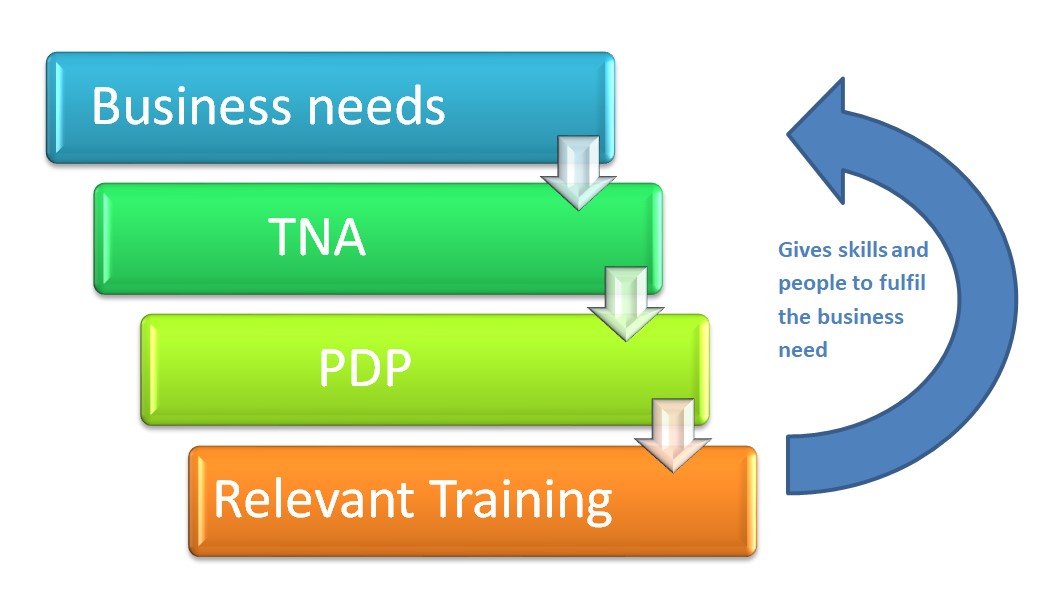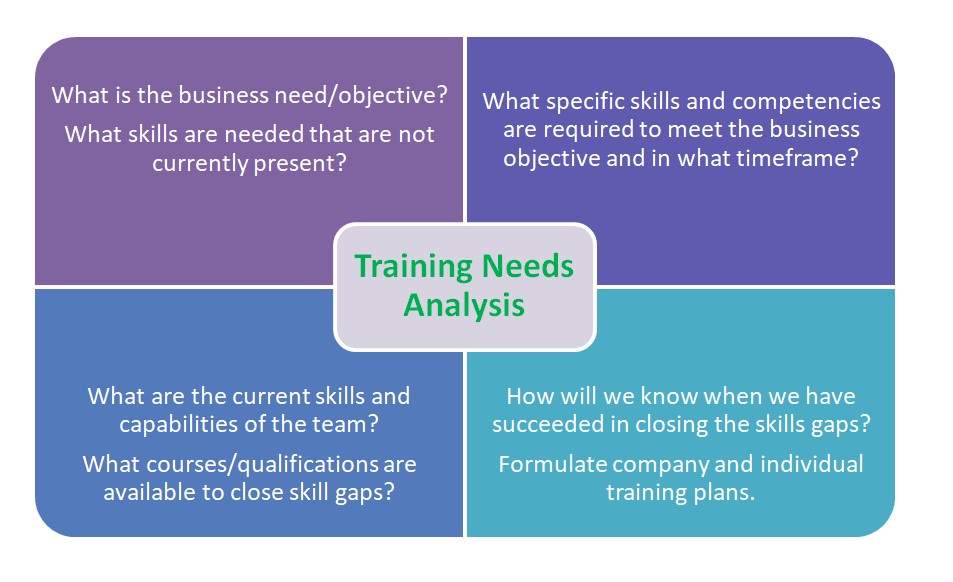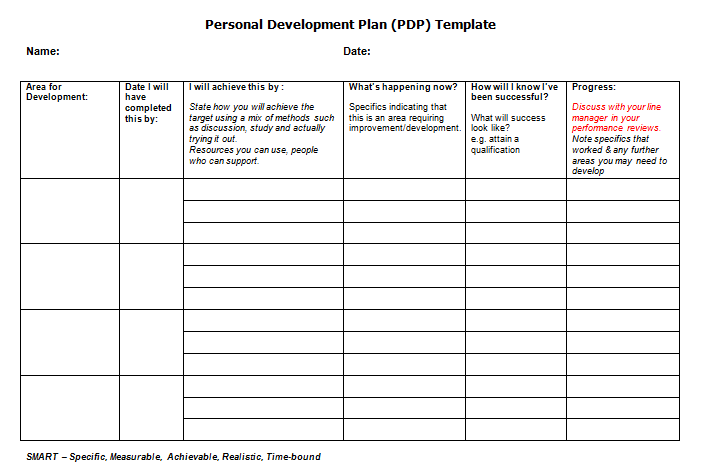
Useful management tools:
Training Needs Analysis, Personal Development Plans and SMART Objectives
Are you working in your business or working on your business?
When reviewing your business, whether as a manager or as a business owner, it is sometimes a little overwhelming in terms of what information is important and why.
Your business review may be used to decide the direction of the business for the next 12 months or even as part of a three or five year plan.
What tools/models are available to you that may prove useful?
Training Needs Analysis, Personal Development Plans and SMART Objectives
OK, so if we’ve used various management tools to work out what we want to achieve.
What do we do to see if we have the correct staff with the right skills and knowledge to deliver our business plans?
We could look at a process flow like this:

Where TNA is Training Needs Analysis and PDP is Personal Development Plans (see below).
Training Needs Analysis
A TNA is something you need to do before creating any training programs within your organisation.
Ideally the training goal should correspond to a business objective and make sure that your desired outcomes match up with those of the business as a whole.
Involve your team in the process by explaining what you are trying to achieve for the business and ask them what they think may be required. This could be done in a group environment, through one-to-ones or through assessment and evaluation.
Remember that a performance gap is simply the difference between the way your employees are currently performing and the way they need to perform in order to achieve business goals.
Once you have collected all competency evaluation data, it should become clear whether there are gaps in key competencies. Create a list of gaps and prioritise them in order of importance. This should take into account the percentage of your team that needs the training and who should attend training as a priority. During this stage, try to find a balance between the most appropriate and the most cost-effective training method.

Useful web links:
www.growthengineering.co.uk/how-to-do-training-needs-analysis/
www.businessballs.com/performance-management/training-needs-analysis/
Personal Development Plans
Well trained and engaged teams can bring value to organisations, customers and business. This in turn can help provide competitive advantage. Team members are more confident and competent in tasks that they are undertaking. This will help add value for you, your business, the team member and your customers.
So what is a Personal Development Plan and why should everyone have one?
“PDP supports the idea that learning is a lifelong and life-wide activity. The process of PDP can strengthen the capacity of learners to reflect upon their own learning and achievement and to plan for their own personal, educational and career development.
This is a core learning process, required throughout many employment and continuing professional development contexts. “
Source: The Open University
As an individual, building and discussing a personal development plan will help you:
- Become aware of skills you have.
- Identify and develop skills you need.
- Work out what you want to achieve and how to achieve it.
- Focus on potential study, career and personal development goals.
There are various templates for a PDP. One example can be found here.

The PDP should be reviewed at appraisals/reviews to decide if any adjustments are required and if any additions to the plan are needed. It should also be used to recognise and celebrate success.
SMART Objective Setting
SMART objectives are mentioned as part of the PDP but can also be key in the use of the other management tools. Keeping things SMART helps focus on what’s important and what needs to be done. It makes achieving objectives real and put the possibility within everyone’s grasp.
Make each priority into a concise statement and run it through the SMART test.
Follow these steps for setting SMART objectives. For each objective ask yourself whether it is:
- Specific
Will everyone be able to understand it? A vague objective often leads to poor results.
- Measurable
Clear targets allow you to measure whether you are making the progress you expect or have anticipated.
- Agreed, attainable and achievable
Objectives must be agreed so your people can own them. They should be attainable and achievable by the person you have asked to meet the objective.
- Realistic and resourced.
Given your resources and the current climate, is your objective realistic? Do you have the resources (the time, money and tools) to make it happen?
- Time-bound.
You must set a clear timeframe for objectives so the people working on the objective are clear when it should be achieved by.
An objective will only be useful if it passes the SMART test. If it doesn’t pass, change it until it does.
An example of a SMART objective may be:
Increase total contact lens sales for the practice by 3% for the following financial year ending 31st December 20XX.
After you’ve produced your objectives, give them the common-sense check and make sure they fit together to form a unified strategy within your business plan.
Once you’ve agreed the SMART objectives, put them in a format that makes it easy to review and update.
